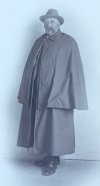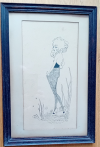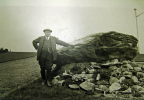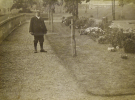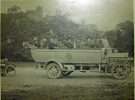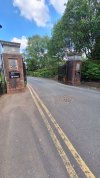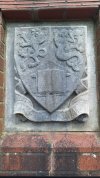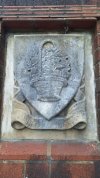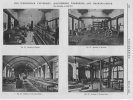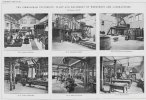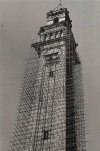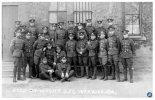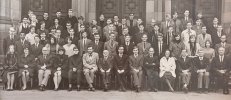William Bick was my grandfather and I was born and lived in the house next door to his home on the Bristol Road in Bournbrook. My sister has the original photograph of grandad standing next to the rock and the one below. William had a number of postcards made of pictures of himself in different places and it may well be that he was good at self-promotion. I photographed the original images some years ago, the copy is not as good as your newspaper article but I'm sure I could get a better copy from the original if it is of interest to anyone. Judging by all of the plant labels I would imagine that this was posed for when he first laid out the gardens.
View attachment 190049
Below, this is William at the University admiring his handy work, (or more likely the work of his team of gardeners.) I'm fairly sure that the row of houses in the distance must be along the Bristol Road. It must have been a very nice life for William, working at the University, his home was just a very short walk up to the right of this image and I imagine that he will have had more than a few pints of beer at the Gun Barrels pub that was an even shorter walk to the left.
View attachment 190050
My mother told me that her father was a big eater, but particular. She said that he would stay up all night waiting for a pear to be just right to eat, she told me about him buying the biggest turkey in the market that was delivered by the train staff from the local station, it arrived plucked and had an address label around its neck, no wrapping at all, just the dead bird with a label tied around its neck.
William used to eat several raw eggs at a time, mum said that, on one occasion, he sat on the running board of a car and ate all of the cracked eggs they had in a basket that he had bought from the market. I remember mum telling me how, with a magnifying glass, he showed her the tiny tiny worms moving on the cheese that he was eating, and how he kept a large barrel of eels in the scullery, they used to frighten her as they would make the wooden lid move and she was sure they would escape, they were of course for eating, not pets.
It's wonderful that these images, captured in one sixtieth of a second over 100 years ago, bring back lovely memories of the things that my mother told me about her father. I just wish that I had asked more questions and had taken in so much more than I can now remember.
View attachment 190051
Above. This must have been a jolly good day out for the lads!
William, (seventh from the back,) is in his usual flat cap, and is seated to the left of the gentleman in the bowler hat. Note all 15 men have a moustache of one size or another.
I'd be interested if anyone could tell me more about the image. I have it in my mind that I was told that it was what we would now call a ‘Works Outing’, for all of the gardeners, but I could be wrong. Maybe there is someone out there who can throw more light on it?
Take a moment to take in the scene, it looks like it is in castle grounds. The bus/car/coach, what do you call it? is made for all weather touring with a canopy that must extend right from the back of the vehicle to the front. The running boards run the whole length of the cab. To the right of the rear wheels, you can see what must be a chain guard that covers the chain that drives the back wheels. Protruding just in front of the windscreen you can see a curly brass horn that would have a large rubber bulb to press, to warn people to get out of the way! Note the lovely side lights either side of the cab just ahead of the windscreen, and what looks like a single large headlight at the front, above the hand crank that was used to start the engine. The lamps would be lit with a match not a switch. In my mind I see the carriage work has being painted a nice cream colour.
Don't forget to look at the motorbike to the left, you'll see that it has a side car and maybe carried some overspill passengers? Again, this is a snapshot of the original image that my sister has. I'm sorry about the poor quality of the image but I figure that any image is better than no image at all.
I'm very grateful for all of the effort that the folks of the history forum put into operating this site and I'm pleased to be able to hand on any fragments of historical information that I might have.
If anyone knows how I can make contact with "JulieBrum" who sparked my interest in this thread please contact me.
Kind regards . . . Andy
